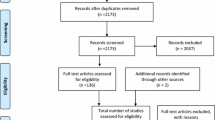Abstract
The Yale Pharyngeal Residue Severity Rating Scale was developed, standardized, and validated to provide reliable, anatomically defined, and image-based assessment of post-swallow pharyngeal residue severity as observed during fiberoptic endoscopic evaluation of swallowing (FEES). It is a five-point ordinal rating scale based on residue location (vallecula and pyriform sinus) and amount (none, trace, mild, moderate, and severe). Two expert judges reviewed a total of 261 FEES evaluations and selected a no residue exemplar and three exemplars each of trace, mild, moderate, and severe vallecula and pyriform sinus residue. Hard-copy color images of the no residue, 12 vallecula, and 12 pyriform sinus exemplars were randomized by residue location for hierarchical categorization by 20 raters with a mean of 8.3 years of experience (range 2–27 years) performing and interpreting FEES. Severity ratings for all images were performed by the same 20 raters, 2 weeks apart, and with the order of image presentations randomized. Intra-rater test–retest reliability, inter-rater reliability, and construct validity were determined by pooled multi-category multi-rater kappa statistics. Residue ratings were excellent for intra-rater reliability for vallecula (kappa = 0.957 ± 0.014) and pyriform sinus (kappa = 0.854 ± 0.021); very good to excellent for inter-rater reliability for vallecula (kappa = 0.868 ± 0.011) and pyriform sinus (kappa = 0.751 ± 0.011); and excellent for validity for vallecula (kappa = 0.951 ± 0.014) and pyriform sinus (kappa = 0.908 ± 0.017). Clinical uses include accurate classification of vallecula and pyriform sinus residue severity patterns as none, trace, mild, moderate, or severe for diagnostic purposes, determination of functional therapeutic change, and precise dissemination of shared information. Scientific uses include tracking outcome measures, demonstrating efficacy of interventions to reduce pharyngeal residue, investigating morbidity and mortality in relation to pharyngeal residue severity, and improving training and accuracy of FEES interpretation by students and clinicians. The Yale Pharyngeal Residue Severity Rating Scale is a reliable, validated, anatomically defined, and image-based tool to determine residue location and severity based on FEES.


Similar content being viewed by others
References
Murray J, Langmore SE, Ginsberg S, Dostie A. The significance of oropharyngeal secretions and swallowing frequency in predicting aspiration. Dysphagia. 1996;11:99–103.
Pearson WG, Molfenter SM, Smith ZM, Steele CM. Image-based measurement of post- swallow residue: the normalized residue ratio scale. Dysphagia. 2013;28:167–77.
Logemann J. Evaluation and treatment of swallowing disorders. 2nd ed. Austin: Pro-Ed; 1998.
Dejaeger E, Pelemans W, Ponette E, Joosten E. Mechanisms involved in postdeglutition retention in the elderly. Dysphagia. 1997;12:63–7.
Farneti D. Pooling score: an endoscopic model for evaluating severity of dysphagia. Acta Otorhinological Italica. 2008;28:135–40.
Tohara H, Nakane A, Murata S, Mikushi S, Ouchi Y, Wakasugi Y, Takashima M, Chiba Y, Uematsu H. Inter- and inter-rater reliability in fibroptic endoscopic evaluation of swallowing. J Oral Rehabil. 2010;37:884–91.
Kaneoka AS, Langmore SE, Krisciunas GP, Field K, Scheel R, McNally E, Walsh MJ, O’Dea MB, Cabral H. The Boston residue and clearance scale: preliminary reliability and validity testing. Folia Phoniatr Logop. 2014;65:312–7.
Donzelli J, Brady S, Wesling M, Craney M. Predictive value of accumulated oropharyngeal secretions for aspiration during video nasal endoscopic evaluation of the swallow. Ann Otol Rhinol. 2003;112:469–75.
Han TR, Paik NJ, Park JW. Quantifying swallowing function after stroke: a functional dysphagia scale based on videofluoroscopic studies. Arch Phys Med Rehabil. 2001;82:677–82.
Eisenhuber E, Schima W, Schober E, Pokieser P, Stadler A, Scharitzer M, Oschatz E. Videofluorosocpic assessment of patients with dysphagia: pharyngeal retention is a predictive factor for aspiration. AJR Am J Roentgenol. 2002;178:393–8.
Logemann JA, Williams RB, Rademaker A, Pauloski BR, Lazarus CL, Cook I. The relationship between observations and measures of oral and pharyngeal residue from videofluorography and scintigraphy. Dysphagia. 2005;20:226–31.
Kelly AM, Leslie P, Beale T, Payten C, Drinnan MJ. Fibreoptic endoscopic evaluation of swallowing and videofluoroscopy: does examination type influence perception of pharyngeal severity? Clin Otolaryngol. 2006;31:425–32.
Dyer JC, Leslie P, Drinnan MJ. Objective computer-based assessment of valleculae residue: is it useful? Dysphagia. 2008;23:7–15.
Langmore SE, Schatz K, Olsen N. Fiberoptic endoscopic examination of swallowing safety: a new procedure. Dysphagia. 1988;2:216–9.
Leder SB, Murray JT. Fiberoptic endoscopic evaluation of swallowing. Phys Med Rehabil Clin No Am. 2008;19:787–801.
Wu CH, Hsiao TY, Chen JC, Yeun-Chung C, Shiann-Yann L. Evaluation of swallowing safety with fiberoptic endoscope: comparison with videofluoroscopic technique. Laryngoscope. 1997;107:396–401.
Leder SB, Sasaki CT, Burrell MI. Fiberoptic endoscopic evaluation of dysphagia to identify silent aspiration. Dysphagia. 1998;13:19–21.
Leder SB, Karas DE. Fiberoptic endoscopic evaluation of swallowing in the pediatric population. Laryngoscope. 2000;110:1132–6.
Kelly AM, Drinnan MJ, Leslie P. Assessing penetration and aspiration: how do videofluoroscopy and fiberoptic endoscopic evaluation of swallowing compare? Laryngoscope. 2007;117:1723–7.
Rosenbek JC, Robbins JA, Roecker EB, Coyle JC, Wood JL. A penetration-aspiration scale. Dysphagia. 1996;11:93–8.
Link DT, Willging JP, Miller CK, Cotton RT, Rudolph CD. Pediatric laryngoscopic sensory testing during flexible endoscopic evaluation of swallowing: feasible and correlative. Ann Otol Rhinol Laryngol. 2000;109:899–905.
Leder SB, Ross DA, Briskin KB, Sasaki CT. A prospective, double-blind, randomized study on the use of topical anesthetic, vasoconstrictor, and placebo during transnasal flexible fiberoptic endoscopy. J Speech Lang Hear Res. 1997;40:1352–7.
Daniels SK, Schroeder MF, DeGeorge PC, Corey D, Rosenbek JC. Effects of verbal cue on bolus flow during swallowing. J Am Speech Lang Pathol. 2007;16:140–7.
Leder SB, Acton LA, Lisitano HL, Murray JT. Fiberoptic endoscopic evaluation of swallowing (FEES) with and without blue dyed food. Dysphagia. 2005;20:157–62.
Fleiss JL. Statistical Methods for Rates and Proportions. New York: Wiley; 1981.
Conflict of interest
None of the authors have any conflicts of interest.
Funding
Section of Otolaryngology, Department of Surgery, Yale School of Medicine.
Author information
Authors and Affiliations
Corresponding author
Rights and permissions
About this article
Cite this article
Neubauer, P.D., Rademaker, A.W. & Leder, S.B. The Yale Pharyngeal Residue Severity Rating Scale: An Anatomically Defined and Image-Based Tool. Dysphagia 30, 521–528 (2015). https://doi.org/10.1007/s00455-015-9631-4
Received:
Accepted:
Published:
Issue Date:
DOI: https://doi.org/10.1007/s00455-015-9631-4




